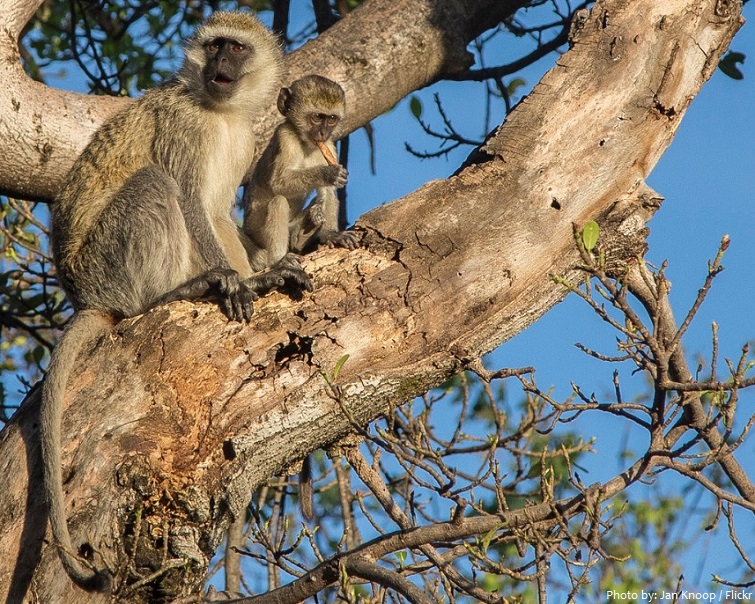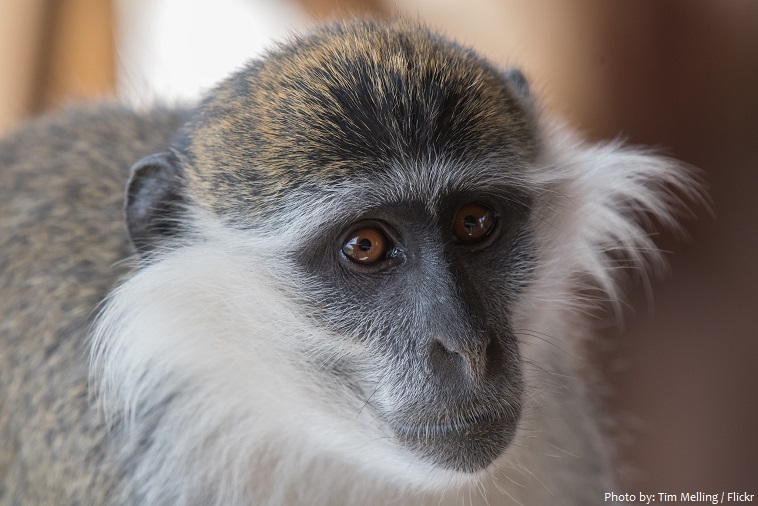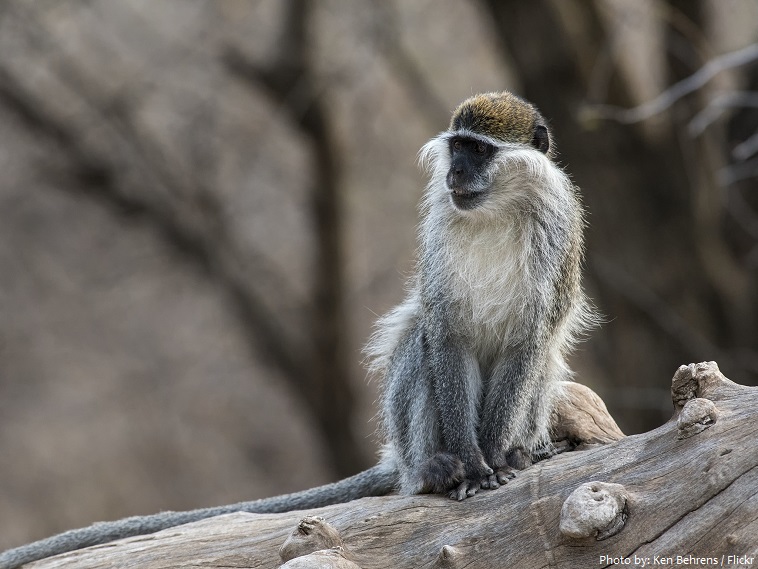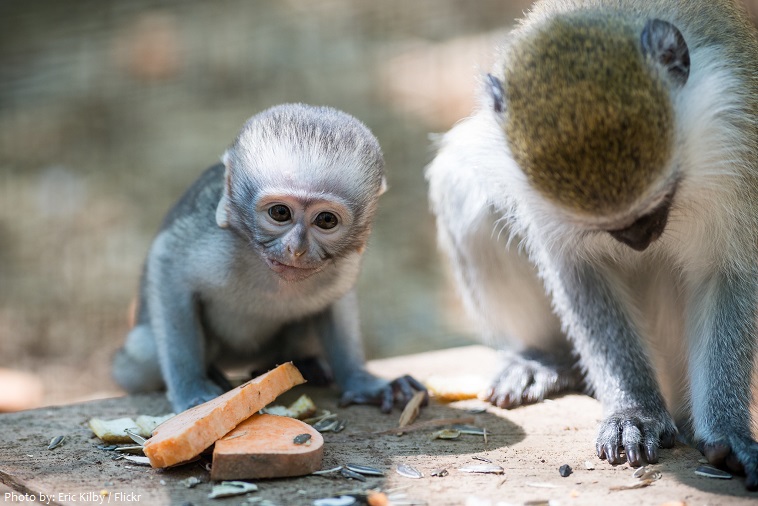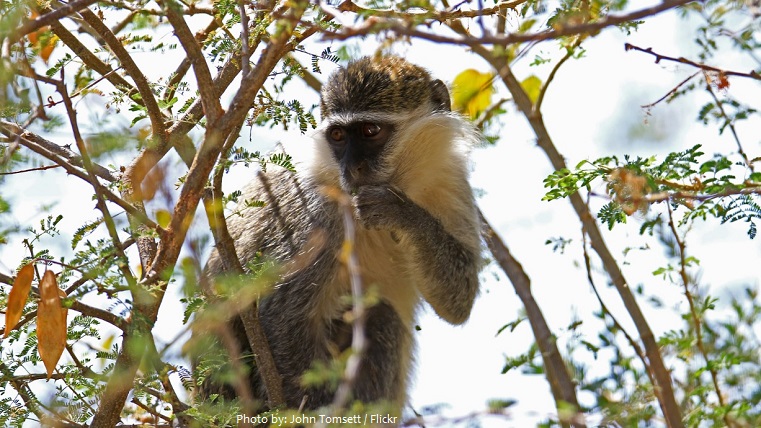The grivet also known as African green monkey and savannah monkey is an Old World monkey.
The scientific name for this monkey is Chlorocebus aethiops.
Some authorities consider this and all of the members of the genus Chlorocebus to be a single species, Cercopithecus aethiops.
The grivet is is found in Ethiopia, Sudan, Djibouti and Eritrea.
In the southern part of its range, it comes into contact with the closely related vervet monkey and Bale Mountains vervet.
The main habitat of the grivet is savanna woodlands. But, it is also able to adapt to many environments.
The grivet needs to live around a source of water, especially during the dry season.
The lifespan for the grivet is about 13 years in the wild and up to about 30 years in captivity.
The head and body length ranges from 42.5 to 49 cm (16.5 to 19 in) and the length of the tail is from 30 to 50 cm (12 to 20 in). The body mass ranges from 3.5 to 8 kg (7.5 to 17.5 lb). Females are smaller than males.
The grivet’s facial skin, hands, and feet are black. The face has a white line above the eyes. It has long white whiskers on the cheeks. The fur on the back has an olive color, while the front is white fur. The skin on the stomach has a blue tint. The fur has a bristly feel.
They have characteristic cheek pouches like other members of the superfamily Cercopithecoidea, which allow them to forage and store food to be eaten later.
The grivet is most active in the morning and in early evening. It stays on the ground most of the day to eat and at night it sleeps in trees.
Grivets move quadrupedally, and they are equally as comfortable on the ground as they are in the trees.
They spends a lot of time grooming, playing, climbing, and play fighting – all of these things help to ensure its survival.
They are opportunustic omnivores, eating fruit, seeds, leaves, flowers, gum, bark, grass, insects, invertebrates, bird eggs, lizards, rodents and other creatures.
These are highly social animals. They travel usually in small groups. However, groups can range from 5 to over 70.
Grivets usually mate during the dry season, between the months of July and November. With a gestation period of about 6 months, babies are often born around the start of the wet season in April and May. When the baby is born the mother will clean the infant and bite off the umbilical cord. Young have pink faces and black hair. It will take around two months for them to get their adult coats. The first few months, the infant will stay very close to its mother, but after six months, the infant is weaned.
Grivets are fascinated by infants in the group and will try to groom them any chance they get. However, the mother’s close family has first access to the new baby, and everyone else has to wait their turn!
Vervet monkeys are prey to leopards, snakes and raptors, as do other savanah monkeys. They may also be preyed upon by baboons.
Although not endangered, it is threatened through destruction of habitat by way of disappearing forests.
The grivet is one of five species of monkey known to have been kept in ancient Egypt, the others being the hamadryas baboon, the olive baboon, the patas monkey and the barbary macaque.
Grivets are depicted on Egyptian tombs as house pets and on leashes.
Grivets were imported from the land of Punt (an ancient kingdom), as attested in paintings and in the Tale of the Shipwrecked Sailor. They were sometimes traded as far afield as Assyria.
They are rarer in representations than baboons and, unlike baboons, do not seem to have borne individual names.
